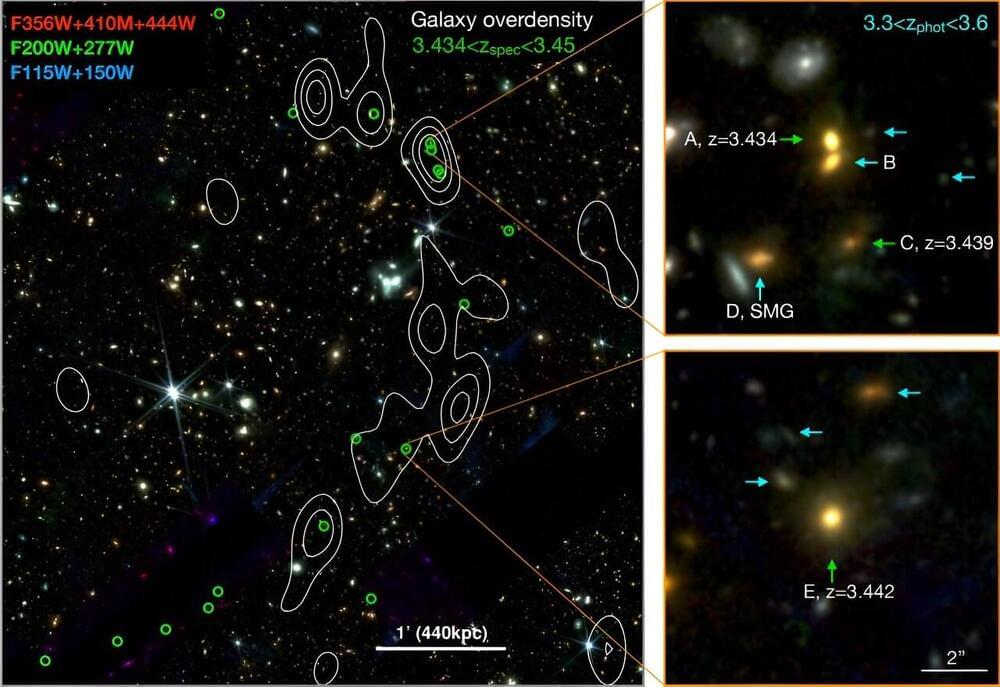Researchers detect and control how a single piezoresisitive molecule changes shape when a mechanical force is applied to it.


Back in the 1950s, when the larger humanity was just beginning to ponder trips beyond the boundary of our world by means of rockets, visionaries were already dreaming of trips to the Moon and the neighboring planets, some of them so large in scope they were akin to the first colonization moves.


An international team of astronomers reports the discovery of a large-scale structure that consists of at least 20 massive galaxies. The structure, dubbed “Cosmic Vine,” has a size of about 13 million physical light years. The finding was detailed in a paper published Nov. 8 on the pre-print server arXiv.
Massive and dense structures of galaxies are perceived as progenitors of galaxy clusters—the most massive gravitationally-bound systems in the universe. Therefore, detecting new structures of this type and investigating them in detail is fundamental for our understanding of galaxy formation and evolution.
Now, a group of astronomers led by Shuowen Jin of the Technical University of Denmark, has detected a new object of this type—a large vine-like structure, hence its name Cosmic Vine. The structure was revealed at a redshift of 3.44, in the Extended Groth Strip (EGS) field observed with JWST. The observations were complemented by data from the Hubble Space Telescope (HST).


Sperm can “defy the laws of physics”, according to new research.
The laws of motion have helped us to comprehend the behaviours of the natural world for centuries, but sperm appears to go against one of the laws set down by Isaac Newton.
Kenta Ishimoto and his fellow mathematical scientists from Kyoto University have revealed new research which suggests that sperm actually display qualities which don’t follow Newton’s third law of motion.




Japan, a country known for its rich history and technological prowess, is moving towards a more equitable evolution. Join us as we explore the compelling journey of women in science and technology, breaking barriers, unlocking innovation, and potentially steering japan toward a brighter, more inclusive future.